Click below to listen to my 2 min. Garden Bite radio show: Oak wilt
A friend of mine has, what used to be, a gorgeous old oak tree. Sadly it has Oak wilt. As we took a walk through a college arboretum I live near, we noticed it there too. Oak Wilt is caused by a non-native, invasive fungus Ceratocystis fagacearum. (now you know why I didn’t even try to pronounce it on my radio show!)
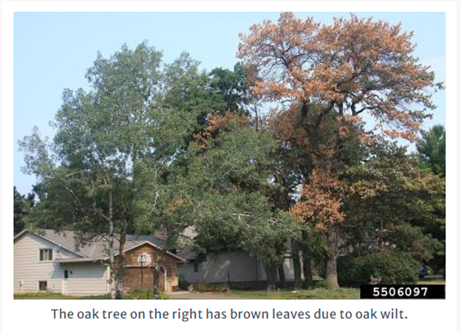
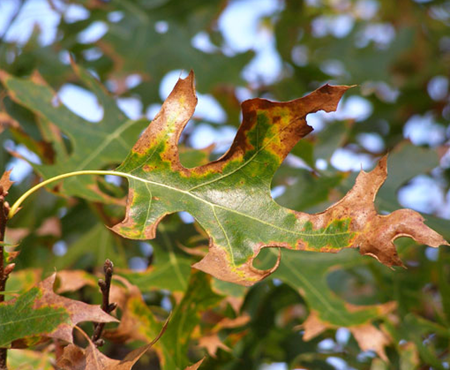
The fungus invades the water-conducting vessels of oaks, eventually killing infected trees. While the oak wilt pathogen can infect all species of oak, those in the red oak group (leaves with pointed lobes) die about two months after infections. Bur oaks die between one and seven years after infection, while white oaks die anywhere from one to over 20 years.
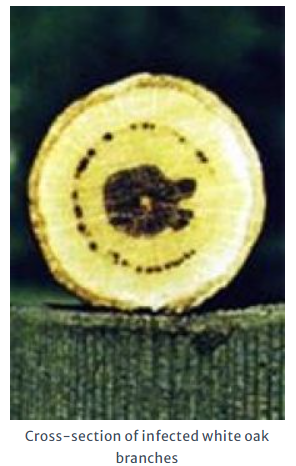

Oak wilt infection spreads in two ways: above ground by sap beetles, and below ground through roots that have grown together, called root grafts. They love the sweet fermented smell of the oak wilt fungus. As the beetle crawls over the spore mat, spores cling to it’s body. As it happily drinks in the sap, the spores are introduced to the tree’s vascular system and disease begins. The sap beetles are why we do NOT prune oak from April to July. The pruning causes sap to ooze and attracts the beetle. I have a Century oak that was planted as a boulevard tree by the City about 4 years ago. I need to raise the canopy so will be pruning the lower branches this week.
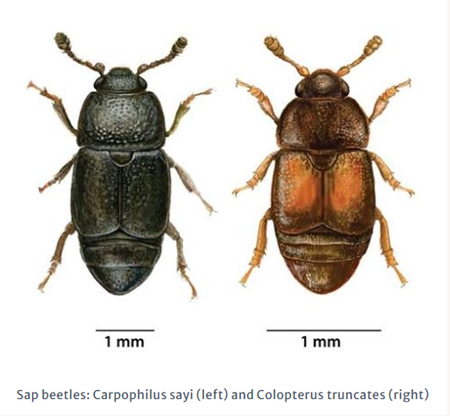
Sources for Minnesota and Wisconsin:
Oak Wilt in MN [UofMN] There is a LOT of great info here on this site.
Oak Wilt [MN DNR]
Oak wilt map for Wisconsin [WI DNR]
Oak wilt Wisconsin [WI DNR]
Oak wilt [USDA]
Oak wilt was first discovered in Minnesota around 1950. Today oak wilt is widespread in the southern half of Minnesota and continues to expand its range northward. To date, oak wilt covers about one-third of the area where Minnesota oaks grow.
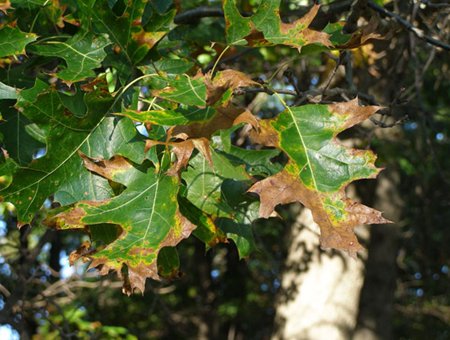
Wisconsin is seeing it in about three quarters of the State with the middle north least affected. Wilting usually starts at the top or outer portions of the tree crown and quickly progresses downward. Leaves take on a bronze to reddish-brown discoloration beginning with the tip and margins, progressing toward the midrib and base of the leaf.
If you suspect your oak has oak wilt, get a professional opinion before doing any kind of possible treatment. Hire an experienced tree care professional or consult the University of Minnesota’s Plant Disease Clinic.
Note: there have been “some” confirmations of oak wilt in western South Dakota.
